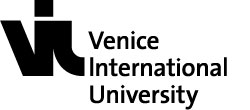S2208 Identity, Heritage and Globalization. Culture, Heritage and Globalization in the Context of Indian Society
Professors
Schedule
Course description
Every society has its own culture: the way people live and express themselves, and how they value objects and ideas. India is no exception. It has its own unique culture and heritage. The study of Indian society has expanded rapidly since the late 20th century. This course will discuss contemporary Indian culture with reference to the past. Traditions, religions, festivals, music, dance, clothing and movies are an important part of contemporary Indian society. At the same time, it will focus on how cultures are changing with globalization.
Indian Culture is one of the oldest cultures in the world. India had an urban civilization even during the Bronze Age: the Indus Valley (Harappan) Civilization dates back to 3300 BC – 1300 BC. Distinct cultures that differ markedly from one another can co-exist in a single country. Thus in India there is unity amidst vast cultural diversity. The way people live in India is reflected in its culture, and students will learn about many lesser-known aspects of the subcontinent. Alongside the traditional culture, globalization has also knocked on India’s cultural doors and naturally it has left its own impact: the culture has begun to change and as in many other places in the world the Indian people are undergoing something of an identity crisis.
Globalization is a process which makes connections between different countries of different cultures, classes and heritages, and it has brought about major changes in the world. People’s mentality has changed together with their food habits: culture and even languages are refashioned or replaced. This can have both a positive and a negative impact on a society. Some people maintain that globalization is an enriching process, that it opens the minds and attitudes of the people, while others argue that it erases tradition and culture. The aim of this course is to show how globalization has impacted on Indian society and what are its positive and negative effects.
Learning Outcomes
The aim of this course is to give the students an idea of the existing cultural patterns they may be unfamiliar with. Students will learn about various aspects of Indian culture and heritage and at the same time about the inequalities that exist in society. This course examines cultural issues at societal and global levels. It discusses the impact of globalization on Indian culture and identity. Students will be encouraged to think critically and write analytically about another culture, which will help them to become better global citizens.
Syllabus
1. Orientation/ Introduction
General lecture on culture, Heritage and Globalization
2. Defining cultures
Indian Cultures as Heritage
Different definitions of culture
3. Heritage: The Contemporary Past
Indian contemporary religious culture
Time before time
4. Women decoding culture
How women experience the culture and tradition
5. The Culture of Discrimination
Class
Caste
Minority groups
6. Knowledge as Heritage
Language and Education
7. Midterm Assessment and Definitions of Globalization
[MIDTERM BREAK]
8. Heritage
Definition of Heritage
Heritage and class
9. Indian Heritage and Globalization
A historically and theoretically rigorous approach to heritage in relation to globalization
10. Intangible Cultural Heritage of India
Indian traditional music, dance and performing arts are also important forms of Cultural Heritage that are closely interlinked with the country's history, culture, customs and lifestyle.
11. Culture, Identity and Globalization
Can a cultural localization policy protect national identity in the era of
Globalization?
12. Globalization and the emerging phenomenon of Cultural Tourism, and Identity Crises
Positive and Negative impact of Globalization
13. Exam Week
Teaching method
The course will be taught through a combination of lectures, discussions, and presentations. No previous knowledge is necessary to take this course.
Work to be done outside of class (preparation, etc.): 30-60 minutes of homework is required for each class. In addition, students are expected to review materials after each class, keep up with the readings, complete the assignments and prepare for discussions and presentations.
Evaluation method
Presentation: 20%
Paper: 40%
In-class/take-home exam Mid-term Assessment: 30%
Attendance and class participation: 10%
Bibliography
Handouts, readings, and other materials will be distributed in class. Most of the articles we will use are from Romila Thapar’s writings, 2014 to 2018
AMISH, (2017), Immortal India. Manipal, India.
KAR, ANGSHUMAN, (2015), Contemporary Indian Diaspora, Guwahati, Kolkata.
LOWENTHAL, DAVID, (2015), The Past is a Foreign Country, Revisited, Cambridge University Press, USA.
HARRISON, RODNEY, (2009), Understanding the Politics of Heritage, Manchester University Press, UK.
HARRISON, RODNEY, (2009), Heritage: Critical Approaches, Routledge UK.
THAPAR, ROMILA, (2018), Indian Cultures as Heritage, Alep Book Company, India.
THAPAR, ROMILA, (2014), The Past as Present, Alep Book Company, India.




















